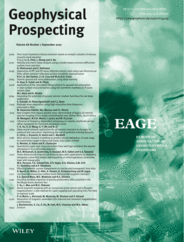
Full text loading...
 , Shuang Liu2
, Shuang Liu2 , Xiangyun Hu2
, Xiangyun Hu2 , Maurizio Fedi4
, Maurizio Fedi4 , Mahak Singh Chauhan5, Mahmoud Ahmed Abbas6
, Mahak Singh Chauhan5, Mahmoud Ahmed Abbas6
Inversion of magnetic data is complicated by the presence of remanent magnetization, and it provides limited information about the magnetic source because of the insufficiency of data and constraint information. We propose a Fourier domain transformation allowing the separation of magnetic anomalies into the components caused by induced and remanent magnetizations. The approach is based on the hypothesis that each isolated source is homogeneous with a uniform and specific Koenigsberger ratio. The distributions of susceptibility and remanent magnetization are subsequently recovered from the separated anomalies. Anomaly components, susceptibility distribution and distribution of the remanent and total magnetization vectors (direction and intensity) can be achieved through the processing of the anomaly components. The proposed method therefore provides a procedure to test the hypotheses about target source and magnetic field, by verifying these models based on available information or a priori information from geology. We test our methods using synthetic and real data acquired over the Zhangfushan iron‐ore deposit and the Yeshan polymetallic deposit in eastern China. All the tests yield favourable results and the obtained models are helpful for the geological interpretation.

Article metrics loading...

Full text loading...
References


Data & Media loading...

